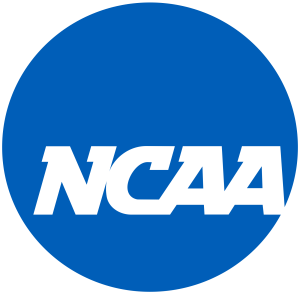
Being a college student in the 21st century is a roller coaster ride consisting of many twists and turns. The constant ups and downs, whether it’s academically or socially, can be a challenging roadblock to overcome.
Each person has their own, unique college life. For some, they are barely making it through each day, living minute by minute. Others look at college like it is the best time of their lives, partying the four years away.
But one thing that can be agreed on between most college students is the struggle to make money during the long, drawn-out semesters. For the thousands of NCAA student-athletes across the United States, this problem is most prevalent when the athletic season rolls around.
This past spring, the NCAA men’s basketball tournament made $771 million alone. But how much of the $771 million actually went to the student-athletes that played in the tournament? The answer to that question is zero dollars.

One of the more controversial topics in recent history regarding college athletics is the reasoning behind why student-athletes do not get paid. Both sides of the argument present intriguing points, but neither have come to a valid agreement on why exactly athletes should be paid.
Early morning practices, full days in class and long nights of homework can certainly take its toll on any student. When student-athletes are in the thick of their sports season, free time is hard to find.
Being a student-athlete entails hours of required practices, study sessions, and commitments that need to be met. But what is lost in all of this is the need to make money.
Being a college student in today’s world is not a cheap life. Whether it’s dropping $200 on a textbook or drowning in debt, students struggle to make enough money to make ends meet.
For student-athletes, this problem can be a harsh reality. When a person’s life is already dedicated to their team and classwork, there isn’t much time to go and work even a part-time, minimum wage job.
The severity of this problem can certainly differences between the three separate divisions of play in the NCAA, but most student-athletes would tend to agree that the issue exists.
Andrew Sennett is a senior captain of the Cabrini men’s cross country team. He believes that his current situation does grant him enough time to get what he needs to get done, thanks to the flexibility of his sport.
“I do feel like I have enough time for academics, athletics, and a paid job,” Sennett said. I’ve done it the past few years, but it is easier for me than other sports because I can go out and run or workout on my own time if I need to. Other sports need to practice together to get better as a team, so they may have to work around a set practice schedule.”
However, each student-athlete and sport comes with different requirements. Brittany McCullough, a senior back on the Cabrini women’s soccer team, “believes finding time can be stressful.”
“I feel like finding time for all three [academics, athletics, and a job] does get stressful, but it is possible with the right schedule,” McCullough said. “For instance, I work at the Dixon Center and the shifts are much shorter only two to three hours, so I am able to fit multiple shifts in during the week and make some money.”
Although McCullough believes the situation would be much more difficult if she wasn’t lucky enough to obtain an on-campus job.
“If I had to work an off-campus job with longer shifts, I feel like it most likely would not work out in my favor, especially in season.”
Division I student-athletes have many more commitments compared to those of a Division III student-athlete. In Division I, the student-athletes travel nationally, sometimes even internationally. At the Division II and III levels, student-athletes tend to travel much less, staying in more of a local vicinity to their college or university.
Due to the largely noticeable differences across the three divisions, it makes matters hard when deciding how athletes can be fairly compensated across the board. For example, Most Division I football teams have a significantly higher attendance rate compared to those of a Division III school. Coming with a higher attendance also means thousands of people watching on television. Therefore, clearly the Division I athlete is helping to bring in more money compared to the Division III athlete.
Although she competes for her school just like Division I and II athletes, McCullough believes that if student-athletes were to get paid, those competing at a higher level deserve to make more.
“Playing a sport for a DI school is like having a job,” McCullough said. “It is expected that you perform at your highest, at all times, and show up for multiple practices a day. There is also a very short off-season for them. In all, it really is a job for them when they have to show up, play sports with high competition, and maintain high enough grades to continue to be academically eligible; the time to maintain a part-time job for them is impossible.”
There are also issues when it comes to paying male versus female sports teams. Division I men’s basketball teams hold the Final Four in large football stadiums that can fit upwards of 100,000 people. Meanwhile, the women’s teams only get the opportunity to play in a regular arena, seating somewhere around 20,000 people. Clearly, an additional 80,000+ people would help to rake in more money than a sold out women’s Final Four game.
On the other side of the argument, there are plenty of people who strongly believe that NCAA student-athletes already have enough benefits. The biggest argument that can be used against student-athletes getting paid is the scholarships they receive.
Some student-athletes are getting a college education with a high discount, or sometimes even for free, in return for play. The average full athletic scholarship at an NCAA Division I university is about $65,000 for a college with higher-end tuition. This scholarship includes $45,000 for tuition fees, $20,000 for room, board and books.
However, the amount each student-athlete receives continues to dwindle thanks to factors like school enrollment and which NCAA division each school stands in. Division III athletes do not even get the opportunity to receive any kind of athletic scholarships.
McCullough believes that no matter the division, student-athletes should all have access to athletic scholarships.
“Athletes should be compensated for their play through scholarship no matter what level they play for,” McCullough said. “As student-athletes, we bring the school revenue in ways that they wouldn’t receive otherwise, whether it be donations, fundraisers, selling sportswear, etc.”
The other argument that is posed is a simple one. Student-athletes have made the decision themselves to dedicate their time to be an NCAA athlete. No one is forcing them to sacrifice the ample amount of time it takes to compete at the collegiate level. Therefore, why should student-athletes be compensated for something they voluntarily do?
Although it may seem like many think student-athletes should get paid, the conversation remains to be heavily favored by those who oppose it. In a 2013 survey, 69 percent of people said that they were opposed to student-athletes receiving compensation for play.
In that same survey, up to 53 percent of people claimed they would stop watching and attending college games altogether, depending on the rate of pay athletes would be receiving.
Student-athletes are given plenty of opportunities each and every day to help better themselves on and off the field. Even if money is not an option to pay student-athletes, there are other ways that they can be compensated.
“I believe that college athletes should not be paid a salary like professional athletes. But I do think athletes should get food, scholarships, equipment and other academic resources,” Sennett said.
After speaking to an NCAA employee, who prefers her name remain anonymous for security, NCAA student-athletes will most likely not see any kind of compensation for play in the near future.
“Over the many conversations I’ve had with various NCAA staff members across all levels, the general consensus is that no student-athlete will be paid,” an employee of the NCAA said. “Do they work hard for those championships? Absolutely. Do they help fund so much? Yes. But your job as a student-athlete is to be a student because getting an education is the most important part of the NCAA.”
Wherever you may stand in the conversation, one thing is for sure, it doesn’t seem like there will be a solution any time soon. This topic may be widely addressed by the public and student-athletes themselves, but it is not a concern within the offices of the NCAA.


